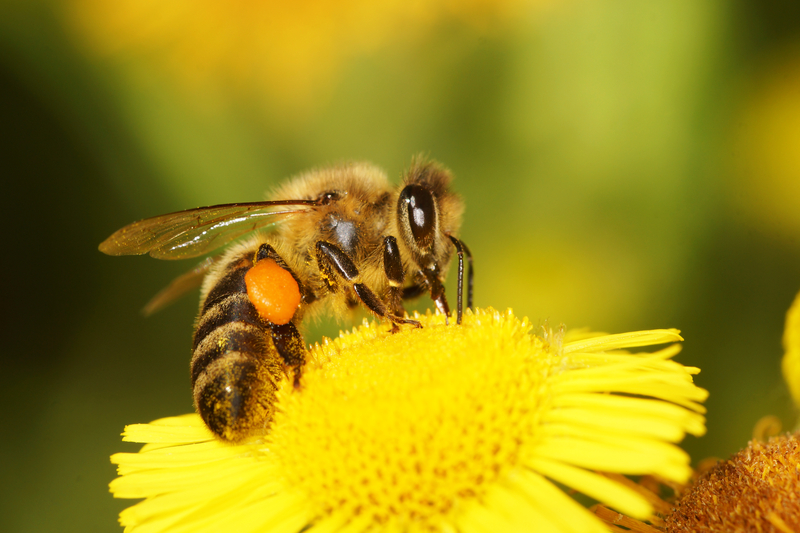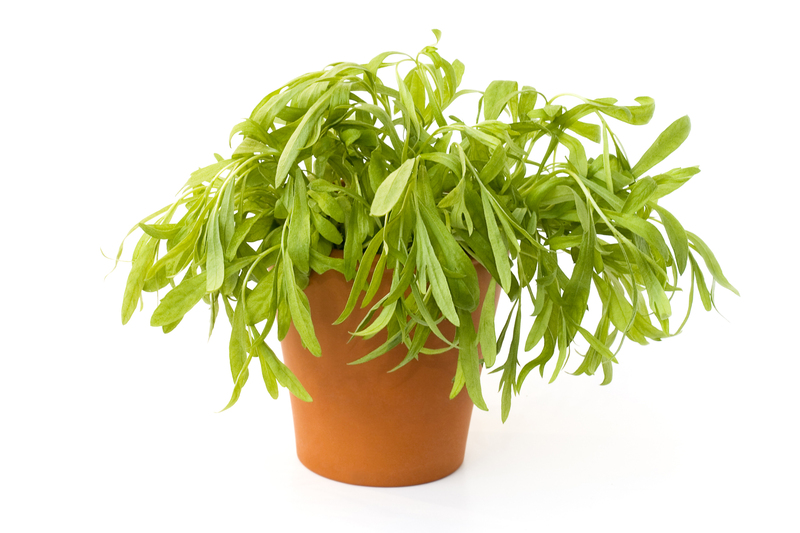Exploring the Basics of Container Gardening
Posted on 21/06/2025
Exploring the Basics of Container Gardening
Welcome to the wonderful world of container gardening! Whether you're a seasoned horticulturist or a complete beginner, container gardening offers an accessible, flexible, and rewarding way to grow plants in a wide range of spaces. This comprehensive guide will dive into the fundamentals of container gardening, providing practical advice, tips, and inspiration to help you start your own thriving garden--no matter how much space you have.

What is Container Gardening?
Container gardening is the practice of growing plants--flowers, herbs, vegetables, or even small trees--in containers instead of planting them directly in the ground. These containers can be anything from traditional clay pots to recycled buckets, decorative planters, or even repurposed household items.
It's an easy, creative and space-saving method of gardening, perfect for urban dwellers, apartment residents, or anyone with limited outdoor space.
Why Choose Container Gardening?
- Flexibility: Move your plants to take advantage of sunlight, temperature, and aesthetic preferences.
- Accessibility: Ideal for people with mobility issues, as containers can be kept at a convenient height.
- Control: Easily manage soil, water, and fertilizer, reducing the likelihood of pests and diseases.
- Creativity: Experiment with various plants, container types, and arrangements for unique visual effects.
- Urban Space Optimization: Perfect for balconies, patios, rooftops, and windowsills where traditional gardens aren't an option.
Choosing the Right Containers for Your Garden
The first step in starting a container garden is selecting the appropriate containers. Spoiler alert: Not all pots are created equal! The choice affects plant health, watering needs, and even aesthetics.
Types of Containers
- Terra Cotta or Clay Pots: Porous, classic look; allows soil to breathe but dries out quickly.
- Plastic Pots: Lightweight, moisture-retentive, available in many colors and sizes.
- Metal Containers: Modern aesthetic, sturdy, but can heat up rapidly in the sun.
- Wooden Planters: Attractive and natural, suitable for larger plants but may rot over time if untreated.
- Recycled and Upcycled Containers: Buckets, tubs, baskets, and other repurposed items can add character and sustainability to your garden.
Size Matters
Size should always match your plant's growth habit and root system. Generally, larger containers retain moisture better and allow more extensive root development. However, small pots are perfect for compact herbs and succulents.
- Herbs: 6-10 inches in diameter
- Tomatoes and Peppers: Minimum of 5-gallon containers
- Small Trees or Shrubs: 15 gallons or larger
Understanding Soil and Drainage in Container Gardening
Unlike traditional gardening, the soil for container gardening needs to be lightweight, well-draining, and nutrient-rich. Regular garden soil tends to be too dense and may hinder root development or water flow.
Choosing the Best Potting Mix
- Commercial Potting Mix: Specifically designed for containers, often sterilized, and includes materials like peat moss, perlite, and vermiculite.
- DIY Mix: Combine peat moss or coir, perlite or sand, and compost for a custom blend.
- Additives: Consider mixing in organic slow-release fertilizers and a handful of worm castings for an extra nutrient boost.
Drainage is critical! Always ensure your containers have adequate drainage holes at the bottom. This prevents water from stagnating, which can cause root rot and other plant diseases.
Best Plants for Container Gardening
A huge part of container gardening basics is selecting suitable plants. The best plants for your container garden depend on how much sunlight you receive, the container size, and your own tastes.
Top Choices for Container Gardens
- Herbs: Basil, rosemary, thyme, mint, and parsley thrive in pots and offer fresh flavors for the kitchen.
- Vegetables: Tomatoes, peppers, lettuce, radishes, spinach, and bush beans grow well in containers.
- Flowers: Petunias, marigolds, pansies, geraniums, begonias, and impatiens provide vibrant color and texture.
- Succulents and Cacti: Require minimal water and are perfect for sunny spots and decorative displays.
- Small Fruit Trees: Dwarf lemon, lime, or fig trees can be grown in large pots on a patio or balcony.
Tips for Selecting Plants
- Group plants with similar light and water requirements together to simplify care.
- Choose compact or bush varieties of vegetables and fruits for best container performance.
- Mix flower types and trailing plants for eye-catching "thriller, filler, and spiller" designs.
How to Plant Your First Container Garden
Are you ready to get your hands dirty? Planting your container garden is simple, but following the right steps ensures beautiful, productive results.
Step-by-Step Guide
- Select the right container and check for drainage holes.
- Fill it with a quality potting mix, leaving a couple of inches from the rim.
- Arrange your plants, paying attention to spacing and aesthetics.
- Carefully remove the plants from their nursery pots and gently loosen tangled roots.
- Place plants in the soil, covering roots and firming down the surface gently.
- Water thoroughly, ensuring moisture reaches the root zone.
- Add a layer of mulch to help retain moisture and suppress weeds (especially for larger containers).
Pro Tip: Always water new plantings slowly and deeply to settle the soil and remove air pockets.
Container Gardening Care and Maintenance
Success in growing plants in containers depends on consistent and attentive care. Unlike ground gardens, containers dry out faster and have limited nutrient reserves, making regular care essential.
Key Aspects of Container Garden Maintenance
- Watering: Check soil moisture daily, especially during hot weather. Water thoroughly until excess drains from the bottom; avoid shallow, frequent sprinkling.
- Feeding: Use a balanced, water-soluble fertilizer every 2-4 weeks, or rely on slow-release granules for steady nutrition.
- Pruning and Deadheading: Regularly remove dead flowers and leaves to promote new growth and tidy plants.
- Pest and Disease Control: Inspect plants at least weekly for signs of insects or diseases, such as yellowing leaves or holes. Remove pests by hand or use organic sprays as needed.
- Rotation: Occasionally rotate containers to ensure even sun exposure and balanced growth.
Dealing with Common Challenges in Container Gardening
Even though growing plants in pots and containers is straightforward, gardeners may face a few unique hurdles:
- Root Bound Plants: If roots circle inside the container, growth might slow down. Repot into a larger container, loosening roots as you go.
- Overwatering or Underwatering: Stick your finger into the soil; if it feels dry an inch below the surface, it's time to water.
- Nutrient Deficiencies: If leaves are yellow or growth is stunted, feed with an all-purpose fertilizer.
- Limited Sunlight: If you get less than six hours of direct sun, focus on shade-tolerant plants such as ferns, coleus, or impatiens.
- Pests: Keep pots and surrounding areas clean, and remove spent leaves promptly to deter infestations.
Creative Ideas for Container Gardening
Container gardening is about creativity and experimentation. Here are some fun and stylish ideas to personalize your space:
- Vertical Gardens: Use shelves, hanging baskets, or wall-mounted planters to make the most of small areas.
- Themed Container Displays: Try a "pizza garden" (basil, tomatoes, oregano), a "pollinator paradise" (bee-friendly flowers), or a succulent collection.
- Multi-Level Arrangements: Stack pots or use plant stands to create visual interest and maximize greenery.
- Upcycled Containers: Paint old cans, boots, or teapots to add whimsical charm to your garden.
- Seasonal Swaps: Swap out spring bulbs for summer annuals or fall mums for year-round beauty.
Container Gardening Tips for Beginners
- Start with easy-to-grow plants like herbs or annual flowers for early success.
- Group containers by sunlight needs to make watering and feeding simpler.
- Invest in wheeled plant caddies for heavy containers, making rearrangement effortless.
- Label your plants to remember what you're growing--especially handy for herbs and veggies.
- Practice good hygiene by cleaning and sterilizing containers between uses to prevent disease spread.
- Keep notes on what works and what doesn't for continuous improvement.

Frequently Asked Questions about Container Gardening
How often should I water my container garden?
Water frequency depends on plant type, container size, and weather. Check soil daily--in hot months, some pots may need water more than once a day, while cooler weather calls for less.
Do I need to fertilize container plants?
Yes! Soil in pots loses nutrients quickly. Use a water-soluble fertilizer every few weeks, or supplement with slow-release fertilizer when planting.
Can I grow vegetables in containers?
Absolutely! Many vegetables--including tomatoes, peppers, root crops, and leafy greens--flourish in well-chosen, adequately sized containers.
Conclusion: The Joys of Growing in Containers
Container gardening opens up a world of opportunities for any aspiring gardener. Whether you live in an apartment with a small balcony or simply want to add greenery to your patio, porch, or windowsill, there's a container garden design for you. By understanding the basics of container gardening--from choosing the right pot, soil, and plants, to mastering care and trouble-shooting--you'll unlock the power to create lush, productive, and beautiful plant displays.
So, what are you waiting for? Pick your pots, select some seeds or seedlings, and start your journey with container gardening today. The benefits are just as plentiful as the plants you'll grow!

